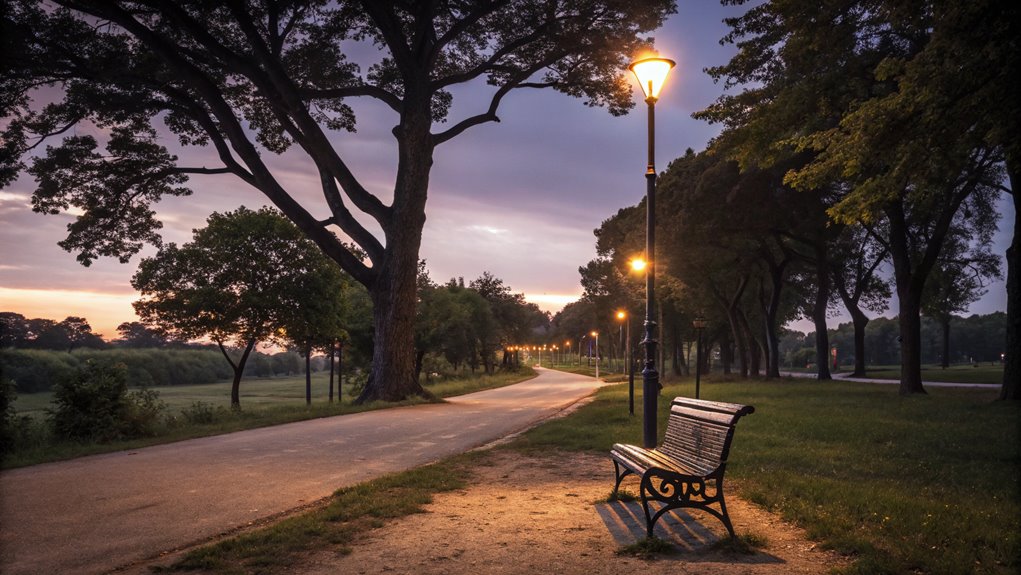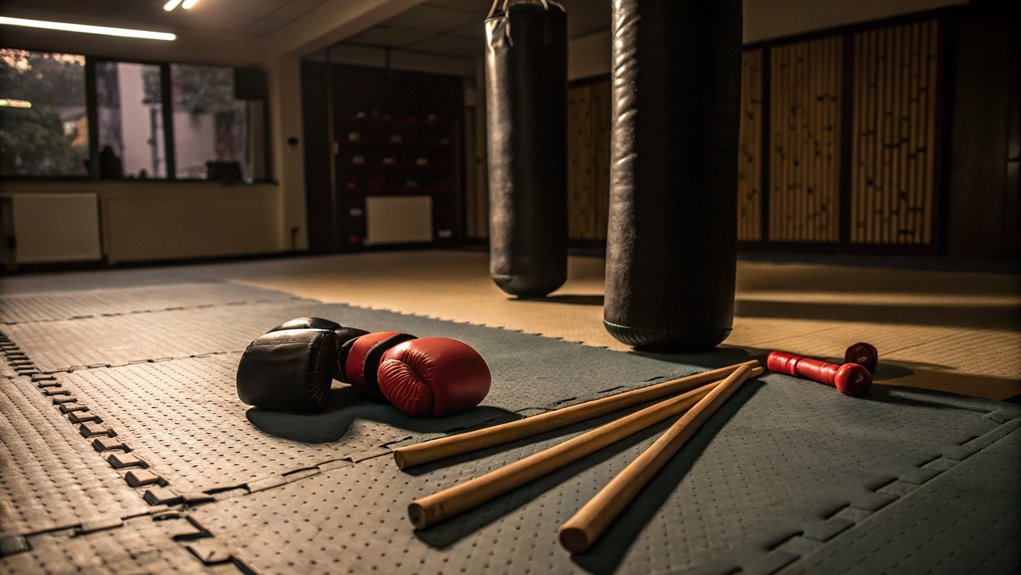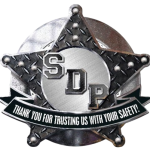The #1 rule of self-defense is to avoid trouble whenever you can. This means staying alert and aware of what’s going on around you. Trust your instincts; if something feels off, it probably is! By noticing sounds and behaviors, you can spot potential threats before they escalate. Plus, choosing safe, well-lit areas and keeping distractions to a minimum helps too. If you ever find yourself in a tight spot, quick reactions matter, so practicing your reflexes can really boost your safety. Remember, the goal is to keep yourself safe, and there’s a lot more to explore about this!
Increased Personal Safety

When it comes to feeling safe, you can’t underestimate the importance of being aware of your surroundings. By sharpening your situational awareness, you’ll notice things that others might miss, which can help you react faster if something feels off. Plus, with these skills, you’re less likely to find yourself in a confrontation, and that’s a win for your personal safety! Carrying a personal security alarm, which emits up to 130dB sound, can be an effective deterrent against potential attackers and enhance your sense of security. Additionally, carrying a 2n1 Personal Burglar Alarm can provide peace of mind by offering both personal and home security with its loud 120 dB alarm sound to deter potential threats.
Improved Situational Awareness
Improving your situational awareness is essential for enhancing personal safety, as it helps you recognize potential threats before they escalate.
Start by paying attention to your surroundings; notice environmental cues like unusual sounds, people acting strangely, or places that feel off. Trust your gut—if something feels wrong, it probably is.
Also, watch for body language; if someone seems tense, aggressive, or overly focused on you, take it seriously. Being aware of these signs can help you avoid dangerous situations.
Remember, when you’re more alert, you can spot trouble sooner, giving you the chance to move away from it.
Enhanced Reaction Time
Enhanced reaction time is essential for your personal safety, especially in threatening situations. When danger strikes, you don’t have time to think; you need to act fast.
That’s why practicing reaction drills can make a huge difference. These drills help sharpen your reflex development, allowing you to respond quickly and effectively.
Imagine you’re in a crowded place, and someone approaches you with bad intentions. If you’ve been practicing those reaction drills, your body will know what to do before your mind even catches up.
By improving your speed and instinct, you’re setting yourself up for success. Remember, the quicker you can react, the better your chances are of staying safe.
Decreased Likelihood of Confrontation
Even though you can’t control every situation, you can greatly reduce the chances of confrontation through awareness and proactive measures.
By focusing on conflict avoidance, you can enhance your personal safety and steer clear of potentially dangerous situations. Here’s how you can stay safe:
- Stay alert to your surroundings, avoiding distractions like your phone.
- Choose well-lit, populated areas when walking alone.
- Trust your instincts; if something feels off, it probably is.
- Avoid engaging in arguments or heated discussions with strangers.
- Learn basic self-defense techniques to boost your confidence.
These proactive measures can help you feel empowered and less vulnerable.
Legal Implications of Self-Defense
When you find yourself in a situation where self-defense becomes necessary, understanding the legal implications is essential. You need to know the legal standards that apply in your area because self-defense laws vary from state to state. For instance, some places have a “duty to retreat” rule, meaning you must try to escape before using force, while others allow you to stand your ground. This means that if you use self-defense, you could face legal consequences if your actions don’t fall within the laws. Being aware of the boundaries can make a huge difference, so always think about the legal risks involved in any self-defense situation. Staying informed can help keep you safe, both physically and legally. For more comprehensive information on self-defense, consider reading resources like the Tactical Defense Spray Book, which covers scenarios such as dealing with multiple assailants and tactical use against weapons.
Self-Defense Training Methods

To effectively defend yourself, you need to engage in proper self-defense training methods. Learning self-defense techniques is essential, and you can start by exploring martial arts like karate, judo, or Brazilian jiu-jitsu.
These disciplines not only teach you how to protect yourself but also boost your confidence and physical fitness. During training, you’ll practice moves that help you escape from dangerous situations and defend against attackers.
It’s important to find a class that matches your skill level and comfort zone, so don’t hesitate to ask questions. Remember, the goal is to empower yourself, not to become a fighter.
Potential Escape Routes
How can you guarantee you’re always aware of potential escape routes in your surroundings?
It’s essential to practice escape planning, so you’re ready in any situation. Start with an environmental assessment—look around for exits, windows, or even places to hide if needed.
When you enter a new space, map out your options. Think about how you’d escape if something went wrong. Are there doors you could use? Is there a clear path to safety?
Keep your phone handy; it could be your lifeline. Remember, awareness is your first line of defense.
Answers to Common Questions
What Should I Do Immediately After a Self-Defense Incident?
What would you do right after a self-defense incident? First, guarantee your safety, then preserve evidence and document everything. Remember, the emotional aftermath can be overwhelming, so seek support to help process your feelings.
Can I Use Self-Defense in Any Situation?
You can’t use self-defense in any situation. There are self-defense limits, and if you exceed them, you risk legal consequences. Always assess the situation and guarantee your response is appropriate and proportional to the threat.
How Can I De-Escalate a Potentially Dangerous Situation?
Like a skilled dancer, you can guide a potentially dangerous situation away from conflict. Use verbal techniques to communicate calmly and recognize non-verbal cues to assess the mood, creating a safer environment for everyone involved.
What Self-Defense Tools Are Legally Acceptable to Carry?
You should check your local laws for pepper spray legality, as it varies by state. Additionally, consider carrying personal alarm options; they’re often legal and effective for drawing attention in emergencies without physical confrontation.
How Do I Choose a Self-Defense Class?
When choosing a self-defense class, consider class types that suit your needs. Look for instructors with relevant qualifications and experience. Reading reviews can also help you find a reputable program that fits your goals.
Bottom Line
In the world of self-defense, the #1 rule is simple: always prioritize your safety. Think of it like a game of chess; you’ve got to stay three steps ahead, planning your moves while keeping your escape routes clear. Whether you’re learning new techniques, knowing the legal stuff, or just being aware of your surroundings, every little bit counts. Remember, when it comes to your safety, it’s not just about fighting back, but knowing when to get away.




